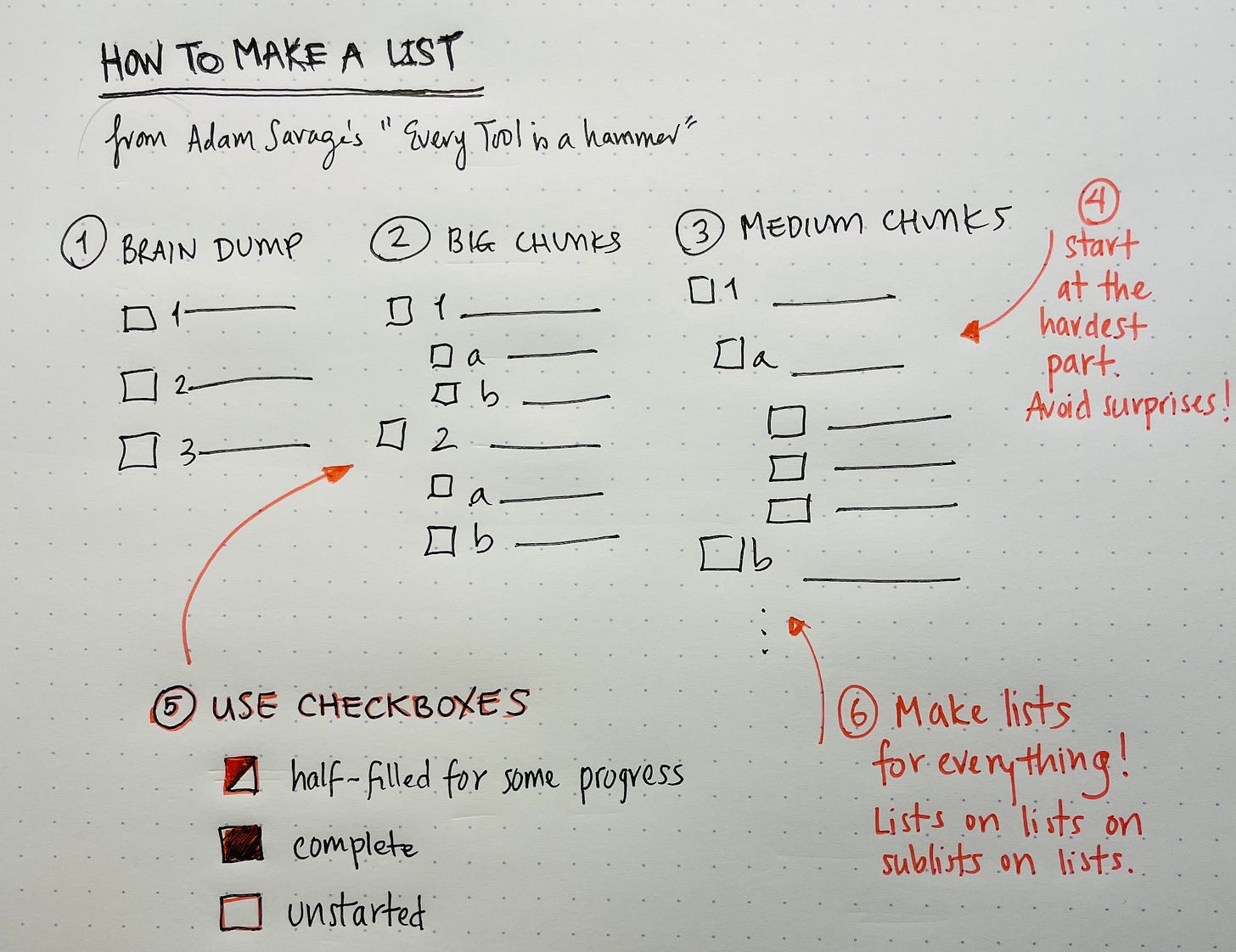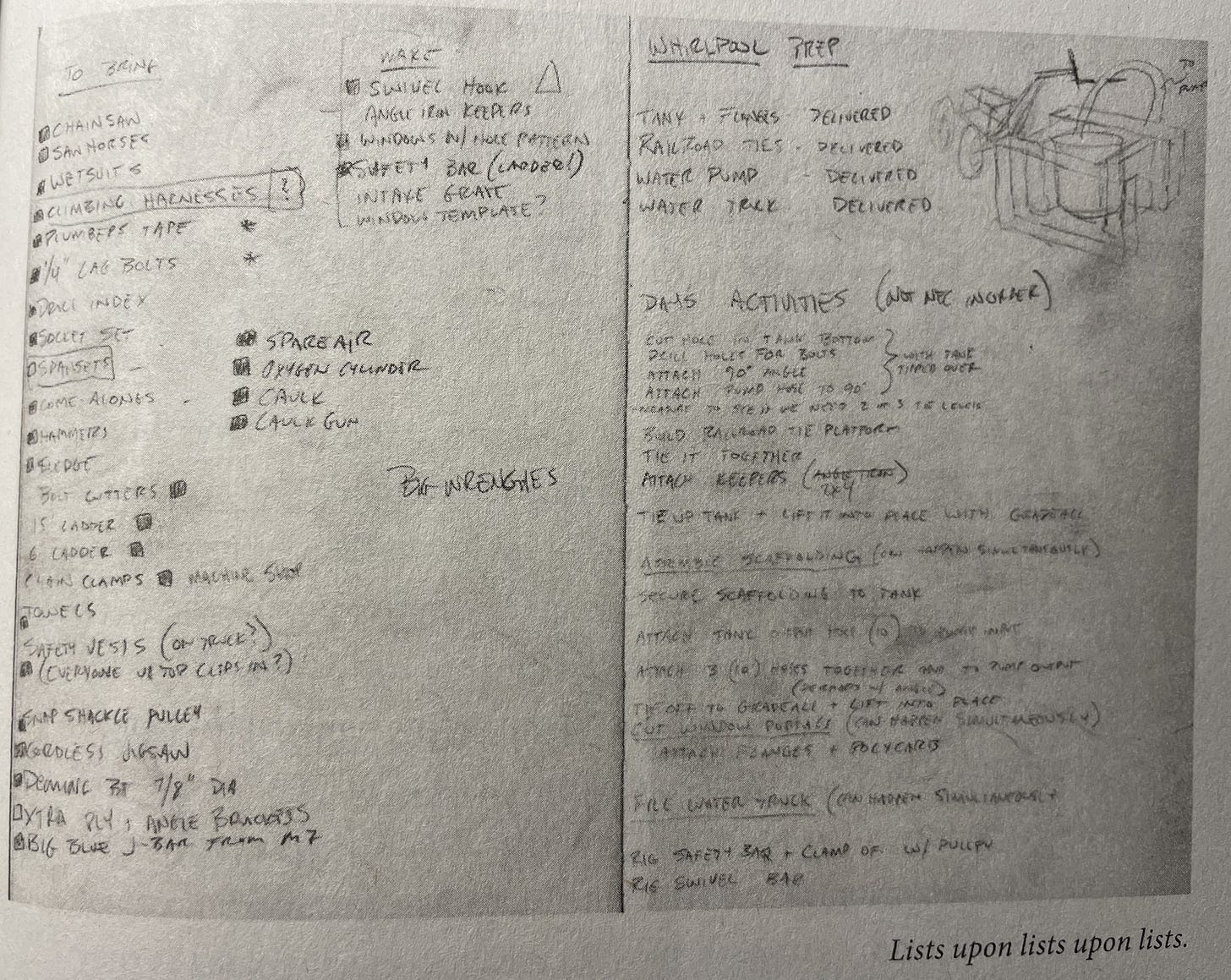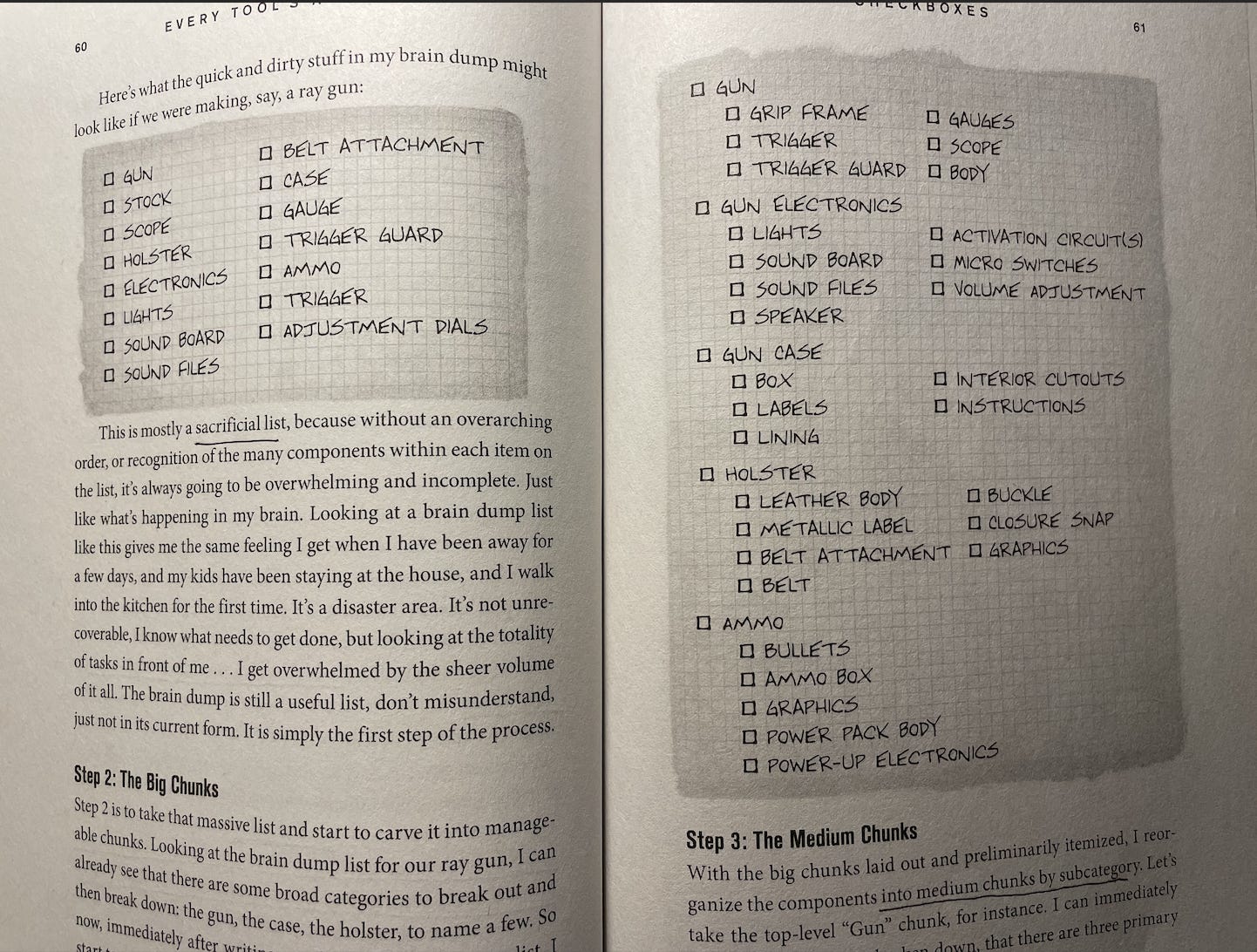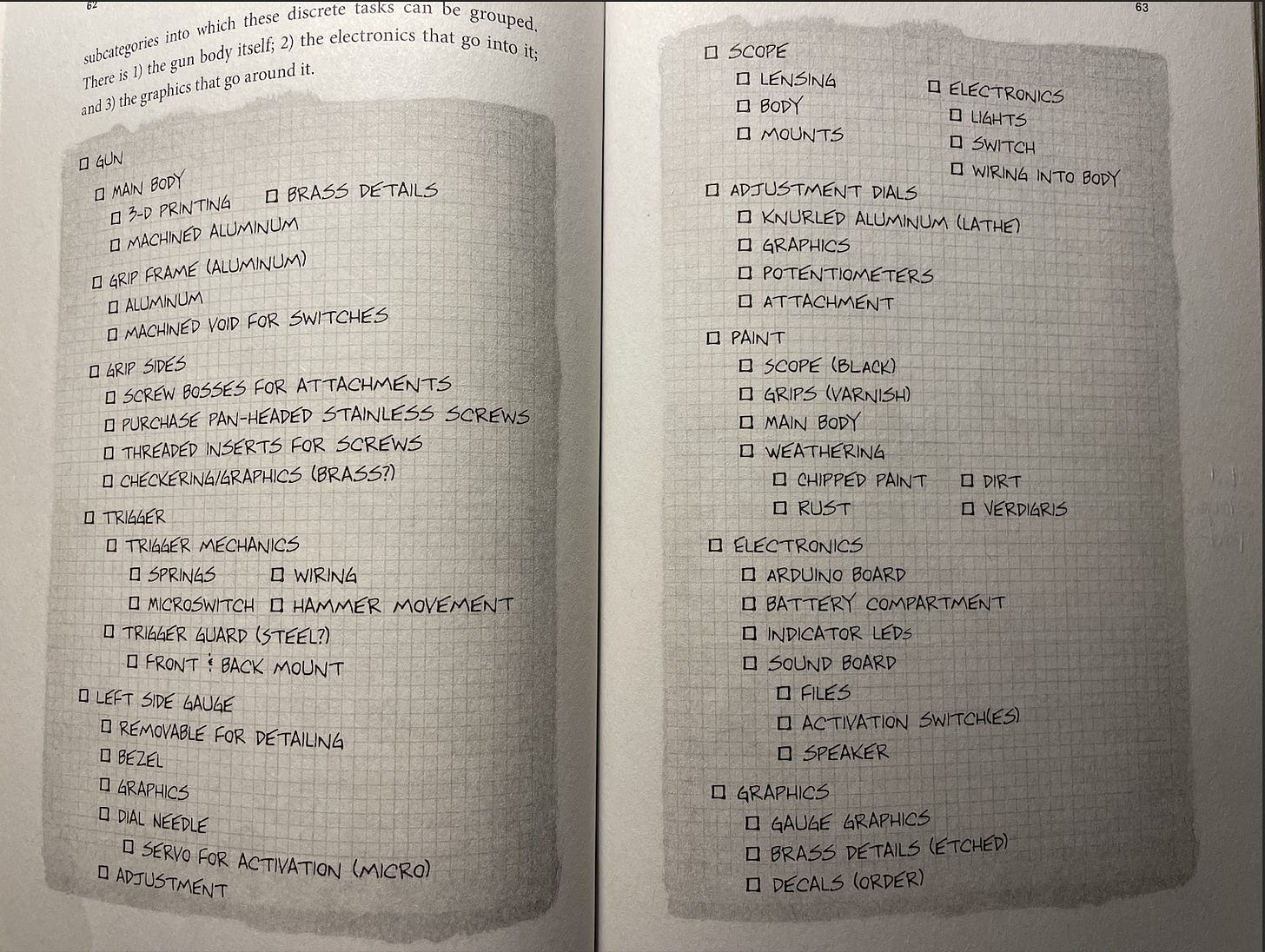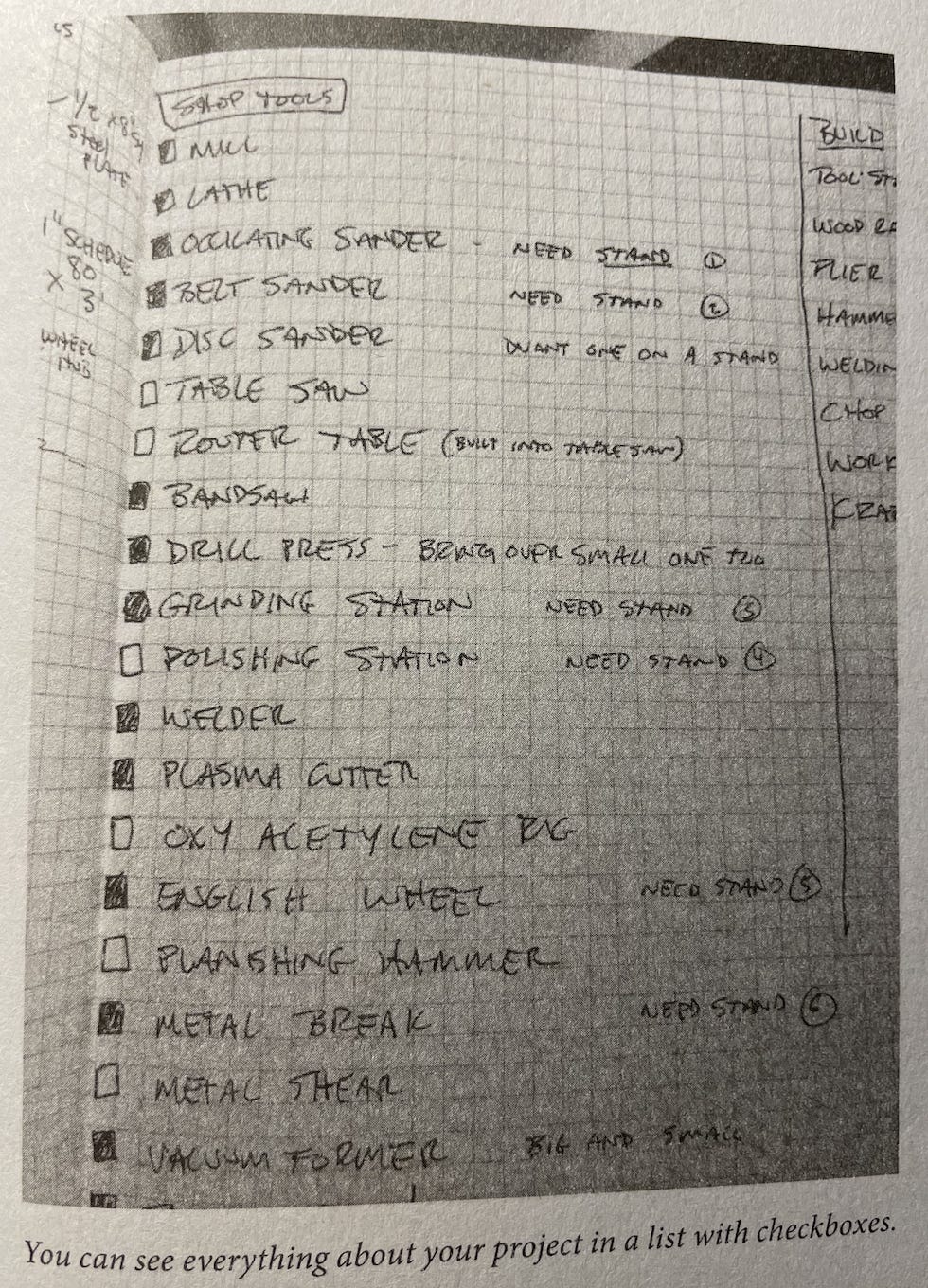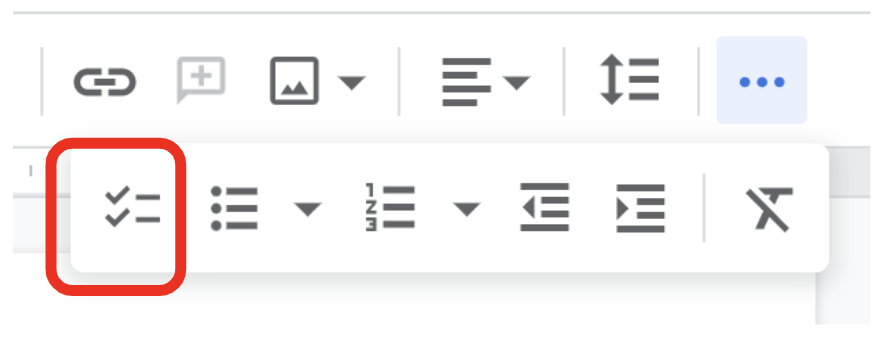On lists & checkboxes
The post this week is going to be just on one topic: making lists.
A few months ago I was looking at various Adam Savage videos and was astounded by the complexity of the projects he undertakes. If you’re not familiar with Adam Savage, he is one of the co-stars of Myth Busters where they’d test some outrageous claims by building crazy devices. For example, episode 8: “Attempting to recreate spectacular feats like … brothers escaping from Alcatraz prison using an inflatable raft made from rubber raincoats.” Or, testing the myth “could a frozen chicken penetrate the window of a flying aircraft? Maybe. Could it penetrate the window fired out of an air compression cannon? Absolutely, positively, it could.”
Savage has now moved onto making things on his YouTube channel, “Tested”. Here he is building an “Aliens Colonial Marine Armour”:
Watching these videos I couldn’t help wonder, how did he do it? What was his process? The complexity of this work is astounding and he does it so frequently there must be a clear method behind his madness. It turns out, he wrote a book on this, “Every Tools’ a Hammer: Life is what you make it.”
My favorite part of the book are the first few chapters on making lists and using checklists. I’ve personally adopted most of what he suggests and I’ve really enjoyed it. Since I know if I recommend a book almost none of you will read it (I know it’s not personal, you’re busy!), I thought I’d summarize the main suggestions.
The passion with which Savage talks about list making I think conveys just how much he relies on them:
I think a lot of creative people look at planning tools like list making [like they anathema to the creative process] at some point in their lives. Planning is for parents. Lists are for accountants and teachers and bureaucrats and all the other agents of creative repression! But here's the thing: lists aren't external to the creative process, they are intrinsic to it. They are a natural part of any project of scale, whether we like it or not.
Now I love lists. I like long detailed lists. I like big unruly lists. I like sorting unsorted lists into outline form, then separating out their topics into lists of their own. Every single project I do involves the making of lists. I make them for organization, of course, but I also make them for assessment, for momentum, as a stress reliever, and, counterintuitively (at least my eighteen year-old self), as a means to improve my creativity and free my thinking. There are daily lists, there are project lists. There are "things to order" lists. I make lists of pieces of research that I want together, lists of people I am collaborating with, and what they need from me to support their part of the project. I make lists of things I need to purchase, things I need to find, and when all of those objects are going to get to me. And hopefully, finally, there are "homestretch" lists, that tell me I'm reaching the end. This sounds like Dr. Seuss, I know, and that's not such a silly comparison, because if lists do anything, they give rhyme and reason to any project, big or small.
Of course, the power of checklists isn’t new. Lots of people have talked about lists with Atul Gawande’s “The Checklist Manifesto” being the most famous - checklists can be powerful in settings large and small from preventing plane accidents to surgical mishaps. However, I found Savage’s suggestions for how to make a list succinct and practical (whereas the Checklist Manifesto doesn’t really get into details of a practitioner).
Here is what Adam Savage’s final products look like:
The key steps he lays out to make a checklist are pretty simple:
The Brain Dump: list out everything you can think of
The Big Chunks: create categories
The Medium Chunks: break down the categories into more details.
Here is the process moving from short list, to big chunks, to medium chunks:
The final piece of the list puzzle is a whole chapter dedicated to the power of the checkbox and why checkboxes are the superior way of listing a checklist item. He really loves checkboxes having learned them at Industrial Light & Magic (ILM) - George Lucas’ visual effects company:
When I arrived at ILM [Industrial Light & Magic], the checkbox was already a piece of institutional practice. I noticed it one day early in my tenure, looking over the shoulder of my boss, Brian Gernand, as he went down his to-do list for me. Next to every item on his list, down the left hand side, he'd drawn little boxes. Some of the boxes were empty, some were colored in, others were only partially filled in. I asked him about it when we were done and here is how he explained his process:
* If a task was completed, he colored in the corresponding box on the list.
* If a task was halfway or mostly complete, he colored in half its box diagonally.
* If a task hadn't been started or measurable progress had yet to be achieved, that box stayed empty.
Brian is one of the best supervisors I have ever worked for. I've seen him manage anywhere from a half dozen to hundreds of builders in the ILM model shop. On a big project like a feature film, each one of those builders works from daily, weekly, and sometimes monthly to-do lists, for production periods last ing sometimes up to a couple of years. The number of tiny details captured in those lists is immense. On a Star Wars picture, it is positively gargantuan. It is easy to see how a supervisor, whose job it is to oversee all that, could drown in the details. And yet, this three-part checkbox technique allowed him to see instantly where he was in any project, at any given moment, on any given day.
The elegance and effectiveness of this planning system floored me…
Here is what the checkbox approach looks like in practice:
Personally, I now love using this list & checkbox approach for anything that requires more than a few steps. I love using checkboxes and get a little rush from filling them in. I love seeing the half filled boxes as well to give a sense for momentum - just as Savage describes. Even better, Google Docs can make bullets as checkboxes as one of the default options which makes it all even simpler…
“When a project feels like a lion that needs to be tamed, a comprehensive checklist can be both the whip and the chair.”
Happy checkboxing!


